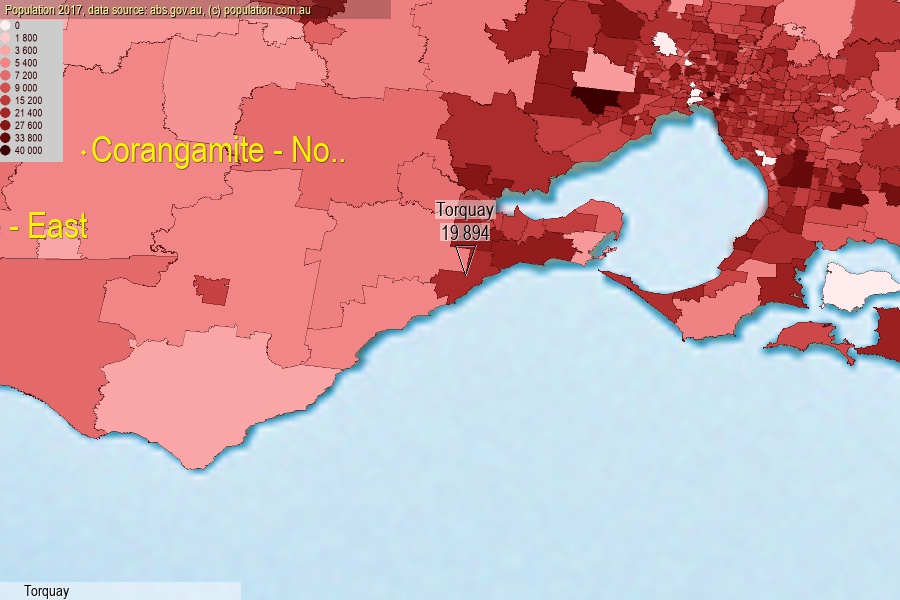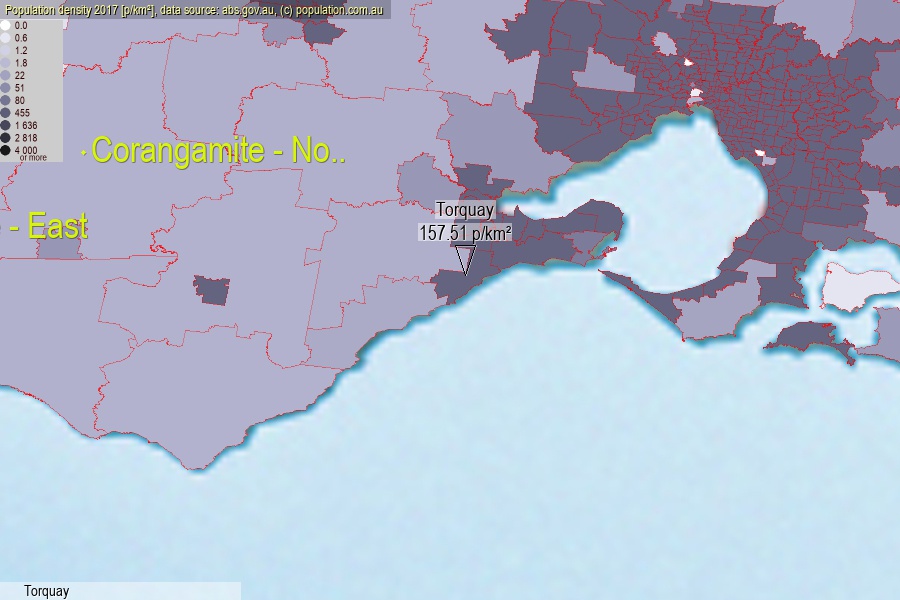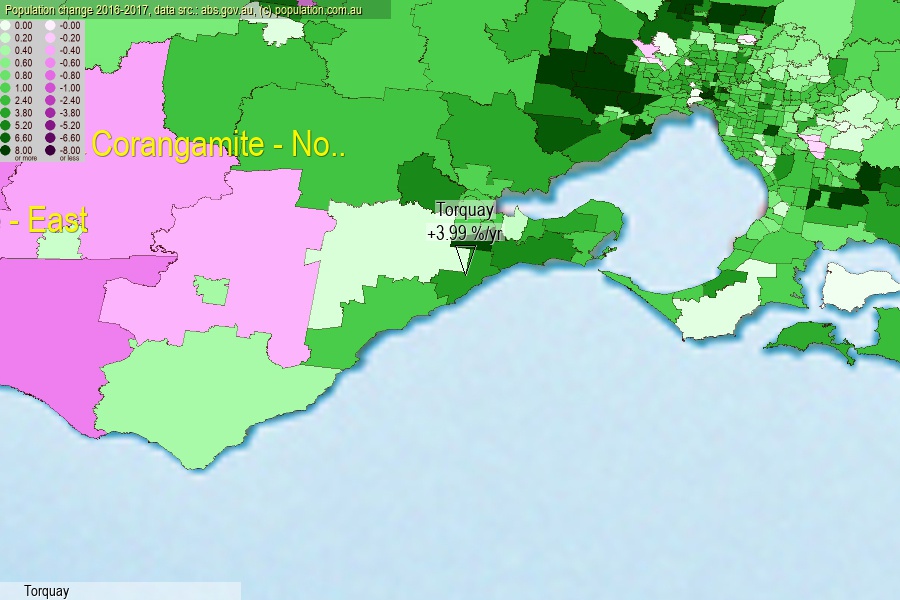 population.com.au
population.com.auLast official estimated population of Torquay (as Statistical Area Level 2) was 19 894 people (on 2017-06-30)[2]. This was 0.08% of total Australian population and 0.309% of VIC population. Area of Torquay is 126.30 km², in this year population density was 157.51 p/km² . If population growth rate would be same as in period 2016-2017 (+3.99%/yr), Torquay population in 2025 would be 27 202. [0]



Click to enlarge. Torquay is located in the center of the images.
Population [people], population density [p./km²] and population change [%/year] [2]
View borders » (new window) [4]
[1991-1992] +6.83 %/Yr.
[1992-1993] +4.73 %/Yr.
[1993-1994] +4.88 %/Yr.
[1994-1995] +4.93 %/Yr.
[1995-1996] +4.34 %/Yr.
[1996-1997] +3.52 %/Yr.
[1997-1998] +2.08 %/Yr.
[1998-1999] +2.54 %/Yr.
[1999-2000] +5.37 %/Yr.
[2000-2001] +3.66 %/Yr.
[2001-2002] +3.91 %/Yr.
[2002-2003] +2.15 %/Yr.
[2003-2004] +1.89 %/Yr.
[2004-2005] +2.12 %/Yr.
[2005-2006] +4.13 %/Yr.
[2006-2007] +6.07 %/Yr.
[2007-2008] +6.01 %/Yr.
[2008-2009] +5.98 %/Yr.
[2009-2010] +5.22 %/Yr.
[2010-2011] +5.11 %/Yr.
[2011-2012] +5.42 %/Yr.
[2012-2013] +4.09 %/Yr.
[2013-2014] +3.73 %/Yr.
[2014-2015] +4.10 %/Yr.
[2015-2016] +4.17 %/Yr.
[2016-2017] +3.99 %/Yr.
[0] Calculated with linear interpolation from officially estimated population
[1] Read more about SA2 and Australian Statistical Geography Standard (ASGS) on abs.gov.au
[2] Population data from Australian Bureau of Statistics (Population and density: 2017; change: 2016-2017)
[3] Digital Boundaries: Australian Statistical Geography Standard (ASGS) 2016.
[4] Border coordinates are simplifyed using Ramer-Douglas-Peucker algorithm.